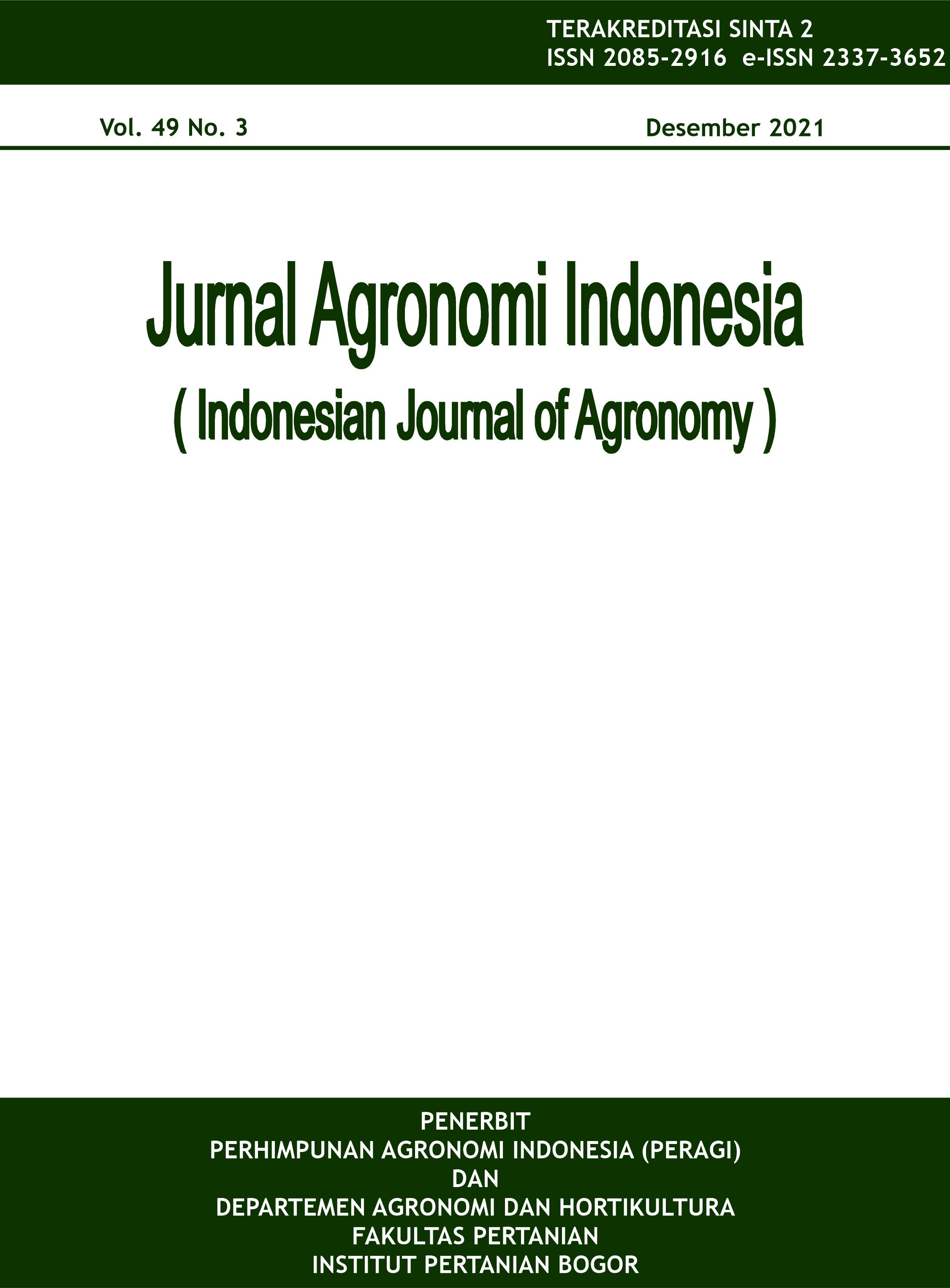Pertumbuhan, Hasil dan Efisiensi Pemakaian Air Padi Inpari 33 pada Perlakuan Pupuk Anorganik dan Organikk
Abstract
The priority of agricultural development to supply national food in line with increasing population. One of the ways enhancements of rice productions is application of inorganic fertilizers, but the application inorganic fertilizer in long term causes soil and water degradation. The organic fertilizer would be restoring the soil condition. This research aims to determine growth, yield and water use efficiency in rice Inpari 33 under anorganic and organic fertilizer treatments. The research was conducted from July to December 2020 in IP2TP Sukamandi, Indonesian Centre for Rice Research, Subang-West Java. The research design is split plot with three replications. The main plot was anorganic fertilizers, namely no application fertilizer of NPK, N, K, P, and application NPK fertilizer. Sub-plots were organic fertilizers consisting of manure, straw compost, and non-organic fertilizers. The research results showed that no application P, K, and NPK fertilizer increased the number of tillers by 44-49%, SPAD value 11-12%, and rice production 33-51%; and the highest water use efficiency 1.17 g grain L-1 water was obtained on no application of P. Organic fertilizers were not increase growth, rice production, and water use efficiency. However, there was an interaction between inorganic and organic fertilizer treatments that affected the number of tillers, number of panicles per hill, weight of 1,000 grains and total evapotranspiration.
Keywords: compost, evapotranspiration, manure, nutrient, NPK













